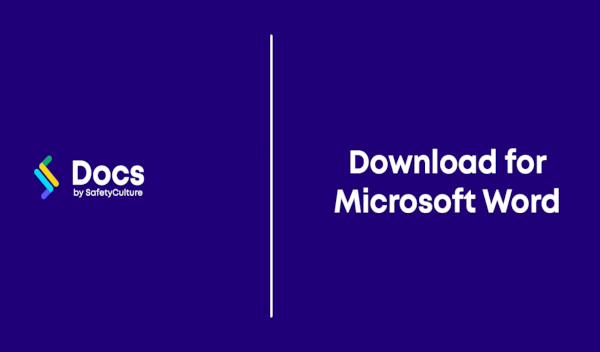Emergency Response Procedure - Electric Shock/Electrocution
- Instant Document Delivery via Email.
- Add to your existing management system.
- Can assist in ensuring workers are adequately trained.
- Customisation instructions provided.
- Microsoft Word Format (Fully editable).
- Only pay once (no subscriptions required).
Emergency Response Procedure - Electric Shock/Electrocution
The Electric Shock/Electrocution Emergency Response Procedure provides a guide for businesses in effectively managing incidents involving electric shock or electrocution. This resource ensures that your team is prepared to handle emergencies safely and efficiently.
Content Overview
- Emergency Response Outline: Provides a guide on calling 000 and steps to support the victim and secure the space.
- Incident/Near-Miss Report Form: Includes a form for documenting incidents or near misses, aiding in future prevention and compliance.
Key Benefits of Implementing the Policy
- Enhanced Safety Preparedness: Equips staff with the knowledge to respond swiftly and safely to electrical emergencies.
- Regulatory Compliance: Assists in meeting Occupational Health and Safety obligations, reducing legal risks.
- Reduced Incident Severity: Minimises the impact of electrical incidents through structured response procedures.
Who is it Suitable For?
This procedure is ideal for a wide range of industries, including construction, manufacturing, and any workplace where electrical hazards may be present. It is particularly beneficial for safety officers, HR managers, and business owners committed to workplace safety.
Ensure your workplace is prepared for electrical emergencies with the Emergency Response Procedure - Electric Shock/Electrocution. Equip your team with the tools they need to stay safe and compliant.
- Instant Document Delivery via Email.
- Add to your existing management system.
- Can assist in ensuring workers are adequately trained.
- Customisation instructions provided.
- Microsoft Word Format (Fully editable).
- Only pay once (no subscriptions required).
Emergency Response Procedure - Electric Shock/Electrocution
The Electric Shock/Electrocution Emergency Response Procedure provides a guide for businesses in effectively managing incidents involving electric shock or electrocution. This resource ensures that your team is prepared to handle emergencies safely and efficiently.
Content Overview
- Emergency Response Outline: Provides a guide on calling 000 and steps to support the victim and secure the space.
- Incident/Near-Miss Report Form: Includes a form for documenting incidents or near misses, aiding in future prevention and compliance.
Key Benefits of Implementing the Policy
- Enhanced Safety Preparedness: Equips staff with the knowledge to respond swiftly and safely to electrical emergencies.
- Regulatory Compliance: Assists in meeting Occupational Health and Safety obligations, reducing legal risks.
- Reduced Incident Severity: Minimises the impact of electrical incidents through structured response procedures.
Who is it Suitable For?
This procedure is ideal for a wide range of industries, including construction, manufacturing, and any workplace where electrical hazards may be present. It is particularly beneficial for safety officers, HR managers, and business owners committed to workplace safety.
Ensure your workplace is prepared for electrical emergencies with the Emergency Response Procedure - Electric Shock/Electrocution. Equip your team with the tools they need to stay safe and compliant.


